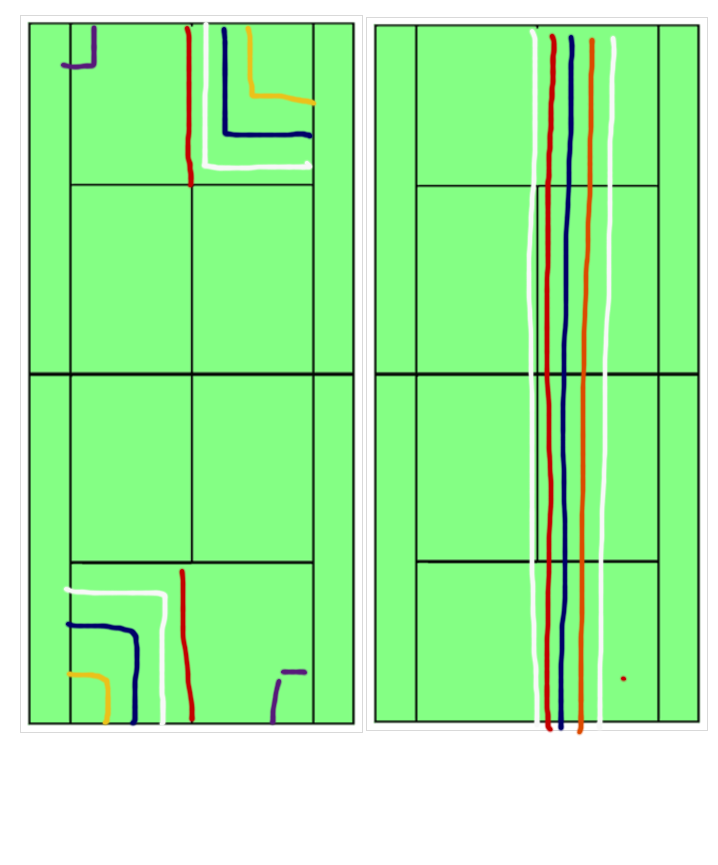Double Down For Mental Toughness
 Thursday, November 17, 2011 at 11:59AM
Thursday, November 17, 2011 at 11:59AM  CAtennis
CAtennis  In tennis, as in all sports, it helps to be a bit of a gambler. Do you serve and volley or chip-and-charge on a big point? Do you risk hitting to the opponent's weapon in order to expose the weakness? Do you hit a drop-shot - a shot that you might not hit too often in match or in practice - at 4:4 30-30? If you're a "thinking" player, you know that there are risks and rewards associated with every on-court decision. Like a professional gambler, you will learn how to weigh all the factors in the split second necessary to make a decision.
In tennis, as in all sports, it helps to be a bit of a gambler. Do you serve and volley or chip-and-charge on a big point? Do you risk hitting to the opponent's weapon in order to expose the weakness? Do you hit a drop-shot - a shot that you might not hit too often in match or in practice - at 4:4 30-30? If you're a "thinking" player, you know that there are risks and rewards associated with every on-court decision. Like a professional gambler, you will learn how to weigh all the factors in the split second necessary to make a decision.
However, this is not the gamble that we're talking about. Specifically, we're talking about making sure that the player plays with more intensity as the game and match goes on. Here's why this is important: have you ever played a match (or, if you're a parent or coach, witness a match) where you win a point, then you lose a point, then you win a point, then you lose two points, then you win a point, then you lose a point, then you win two points, then you lose two points? I already know the answer. Every player has run into a scenario where the points see-saw back and forth until one player decides to mentally check out of the Oh Hell Motel by going for 2-3 slap-shots directly into the back fence. Why does this happen? Well, one reason may be because the player fails to realize the significance of the previous point for the other player. If the opponent has lost the previous point, he will kick and claw to get back to even-Steven, while the player who has initially won the point relaxes and drops his guard for a point or two. Now the tables turn and the roles get reversed.
One way to fix this is by learning to "double down" on the next point. That is, treat the second point as if it were worth TWO points. Win this point, treat the third consecutive point as if it were worth FOUR points. If it helps you, attribute something of value to the point...maybe $1/first point; $2/second point; $4/third point. Etc. Run an internal tab of the score. Do this in practice as well. For example, play a game against your practice partner or coach where the second point won counts as two, the third point in a row counts as three, and so on until one player gets to Blackjack (21). You let your guard down for 2-3 points, and all of a sudden you may find yourself in an insurmountable position. Therefore, learn to fight for every point and, specifically, for stringing more points won in a row v. points lost in a row. This is one reason why match statistics are sometimes deceiving. You can have a match charted by an outsider but some important information may be missing (that's why the videocamera doesn't lie). Thus, it's helpful for a player to develop an internal card-counting method for when she's on the court. Learn the worth of every point - both to you and the opponent so that you can better anticipate what the opponent may throw your way next.



